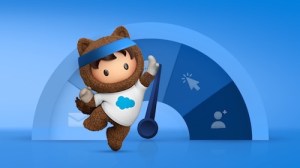From landing pages to downloadable content to free trials, just about every digital marketing investment includes an element of digital experience. Strategic investments in digital experience can deliver outsized marketing returns. You’ve probably noticed how a great email can turn ho-hum offers into lead gen blockbusters. Or how a poor signup experience can doom an otherwise brilliant promo.
What’s the ROX?
Return on experience (ROX) shows up just about everywhere. As a marketer, I wish there was a formula just for measuring ROX. This perfect calculation would track those “I’ll be back” against “that was a pain” moments. At the same time, your ROX number would factor in the boost you get from each “you have to try it” and “why use anything else” share.
Sadly, that single ROX metric doesn’t exist. But don’t fret. Here are 18 marketing metrics you can use to track experience returns. ROX touches many big-picture marketing metrics, such as customer lifetime value and churn. It also shows up in more granular digital metrics, like page views. Just as crucially, experience influences more qualitative metrics, like customer opinions about your brand, service, and products.
Marketers, start your measures!
To measure ROX from a recent digital investment, focus on the top big picture metrics most likely to be impacted. Use digital metrics to spot quick wins or indications the experience needs further refining. Turn to common survey-based measures to uncover shifts in customer perceptions.
Start tracking your marketing ROX by selecting the most relevant measures from the lists below. To take a broad view, choose at least one metric from each of the three lists.
Big picture metrics lead to monetary returns
1. Conversion rates
This rate measures the percentage of traffic that converts by taking your desired action. On a commerce experience that’s probably making a purchase, and on a B2B site that could be downloading digital content. For instance, Goodwine, which sells wine online and in its stores, has increased its conversion rate by 60% since improving its email journeys with Marketing Cloud.
2. Churn
Most relevant for businesses that generate recurring revenue, churn is simply your rate of customer loss. Just divide the number of customers you started with in a given period with the number you lost. The lower your churn rate the better.
3. Lead generation
In many sectors, sales start with leads, especially qualified leads. Well-executed experiences inspire potential customers to take a step that makes them a lead, whether that’s calling, filling out a form, or visiting a physical location. Measure changes in the number of leads generated within your experience to track ROX.
4. Customer acquisition costs
To measure acquisition, divide the total cost to win new customers by the number of new customers gained for a given period. (Hint: you want more customers for a lower cost). Great experiences will attract more customers without breaking the bank on promotions.
5. Customer lifetime value (CLTV)
It’s easy to understand the importance of CLTV – it’s the average revenue you can expect from a customer over the course of their relationship with your company. To calculate, multiply the average purchase value by the average purchase rate (that’s the number of purchases for a time period). Then, multiply that by the average lifespan of customer relationships. Subtract average customer acquisition costs. CLTV improves when acquisition costs go down, relationship longevity increases, and purchase frequency accelerates. A better experience can boost each of those, leading to dramatic CLTV gains over time.
6. Adoption
Divide the number of new purchasers by the number of total purchasers for a product. You want to see your adoption rate climb – while also seeing a decline in attrition.
7. Advocacy
The metrics you’ll use to measure active advocacy depends on the type of program you have to encourage actions like referrals. Possible measures include number of rewards issued for successful referrals, number of referrals, content shares, product reviews, and willingness to provide feedback.
Look to digital metrics for early signs of success
8. Engagement
This measure tracks digital interactions, such as clicks, expanding an image, watching a video, sign-ups, sharing, and likes.
9. New versus returning visitors
This measures the ratio of new visitors to returning visitors. Better experiences inspire visitors to return.
10. Bounce rate
Your bounce rate tracks the percentage of visitors who leave a digital touchpoint after seeing just one screen or page. You want bounce to be low. Look to this metric for early indications new experiences are winning over visitors.
11. Blog/newsletter/content subscription
Does your investment in experience include content? If so, use content consumption (and engagement) along with new subscriptions to measure success.
12. Click-through rates for calls to action (CTAs)
Whether you’re asking customers to watch, buy, download, or share, experiences funnel to an action. Measure the percentage of users who take the actions your experience encourages. For example, Piedmont Healthcare dropped bounce rates by 83.5% and increased click-through rates by 21% by delivering more personalised messages.
13. Traffic growth
Measure traffic to your experience over time. It should grow as existing customers visit more and you attract new users.
14. Time on site
This is the average amount of time a visitor spends on your site.
15. Brand awareness
A better digital experience, especially one that includes content, can impact brand awareness. You can track growing brand awareness by measuring content shares, brand mentions on social media, and searches on your brand.
Hear from customers with survey metrics
16. Customer effort score (CES)
How easy is it for customers to work with you? CES is measured by asking customers to rate the difficulty level of a specific interaction.
17. Net promoter score (NPS)
Capture data for this metric by asking customers how likely they are to recommend your brand using a 10-point scale. Scores of 9s and 10s are from promoters, and 7s and 8s are merely satisfied. And scores of 6 or lower? Those are detractors. Subtract your percentage of detractors from promoters to find your NPS. By improving the experience it delivers, Best Buy Canada saw a year-over-year increase in NPS of 9.5%.
18. Customer satisfaction
Ask your customer to rate a specific interaction, overall satisfaction, or both. It’s common to use a 10-point scale for ratings. To measure ROX, conduct the same survey before you launch the experience and at regular intervals after.
Want to translate your marketing wins into monetary returns? Turn to this post on calculating ROX for insight into how you can measure and share returns that take costs and benefits into consideration.
Want to link content management to CRM?
Content – blogs, video, FAQs, and more – is the conversation you’re having with customers. Learn how and Salesforce CMS helps elevate the conversation by viewing “Introducing Salesforce CMS,” an on-demand webinar. Watch it now.
This post originally appeared on the U.S.-version of the Salesforce blog.

























